The 30 greatest holidays in France for 2025

France is a holiday favourite for a reason. As off-the-beaten-track destinations enjoy their moment in the limelight, it has classic, timeless appeal. It’s not hard to see why: mountains that rise to almost 5,000 metres high, lush vineyards, a coastline both wild and rugged and soft with glassy seas. Let’s not forget Paris, which regularly tops lists as the most visited city in the world.
More than five years after the fire, Nôtre-Dame Cathedral reopened its doors at the end of 2024, but as one monument opens, another closes. Visitors who want to go to the Centre Pompidou will need to get in before September, when it will close for five years of renovation work. French cuisine’s starry reputation is going nowhere: 125 years after the first little red book hit shelves, France still has more Michelin-starred restaurants than any other country in the world (632). It’s deservedly proud of its fare, from 10-course tasting menus to humble croque monsieurs.
Best of all, France is so close. For those of us trying to cut back on flying, Eurostar, the Channel Tunnel and multiple ferry companies run services several times a day.
Whether your holiday style is sightseeing, soaking up the sun or saturating in fine food and wine, these 30 ideas promise not to give you Paris syndrome.
Find the perfect French holiday for you
Best for culture
1. Escape to the châteaux of the Loire
There are more than 300 châteaux in the Loire, from vast palaces sporting hundreds of turrets, to châteaux built on aqueducts crossing rivers, to “modest” castles now used as family homes or hotels.
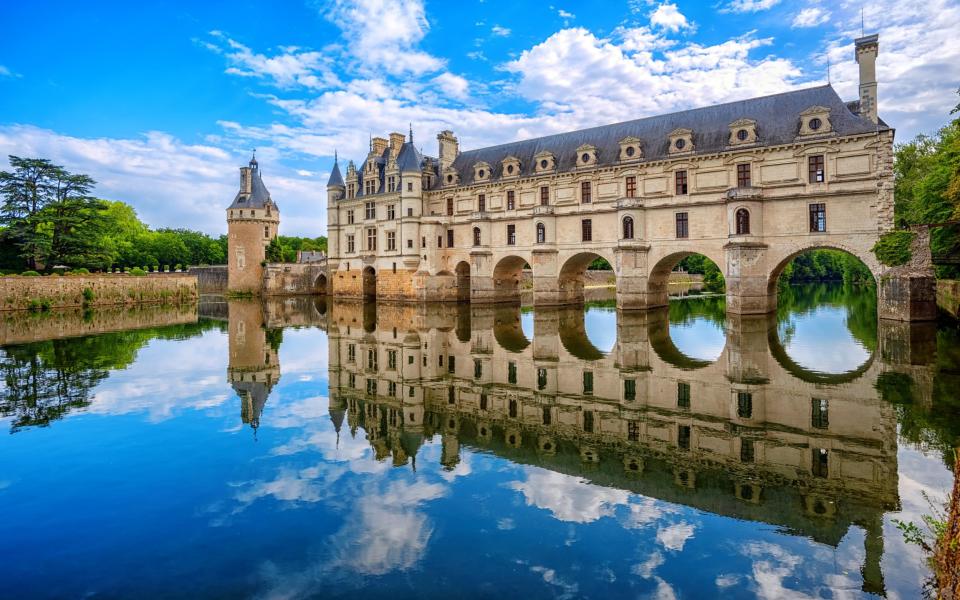
Particular highlights include the Château de Chambord, the largest in the Loire with 440 rooms and impeccably manicured gardens; Château de Chenonceau, a 16th-century castle built on a bridge spanning the River Cher; and Château de Saumur, which sports a decorative spire covered with gold leaf.
G Adventures has a nine-day France Family Journey group trip from £2,999 per person, including hotels, transfers and activities, and taking in the Loire Valley, Bayeux and Versailles.
2. Shop at Lille’s 900-year-old flea market
Lille’s braderie (or flea market) – dating from the 12th century and still the largest in Europe – includes 10,000 exhibitors. So many moules-frites are consumed when it takes place on the first Sunday of September, that little heaps of mussel shells line the streets.
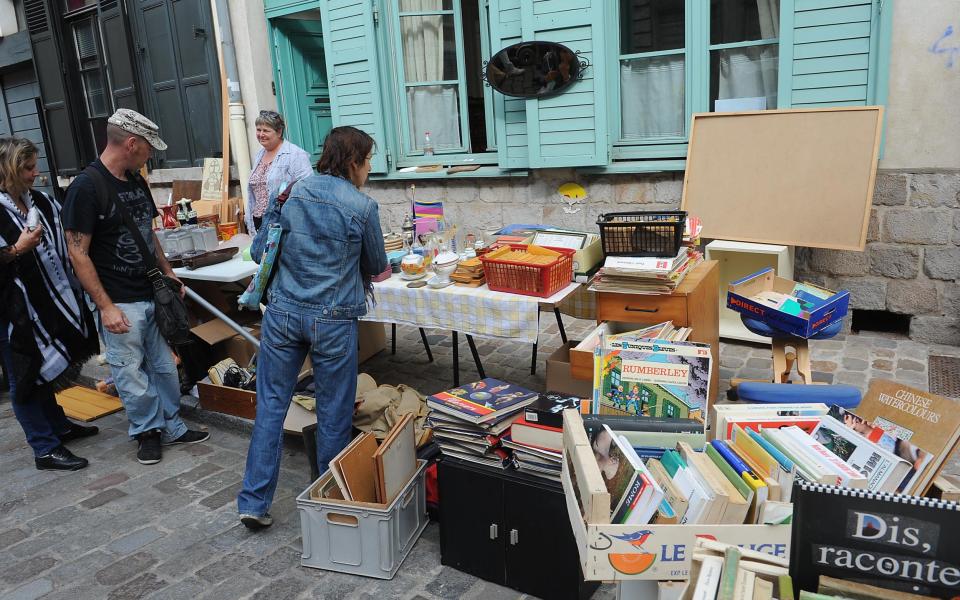
If you can tear yourself away from the party atmosphere and Flemish beer, visit swimming pool-turned-gallery La Piscine de Roubaix, 20 minutes away. Among the artists with permanent exhibits are Ingres, Picasso and Rodin.
Byway Travel has the three-night Hauts-de-France trip to Lille, Amiens and Paris from £503 per person.
3. Throw herring in Dunkirk
January to April would usually be the dreariest time of the year in northern France, but not in Dunkirk, which hosts a three-month carnival. This was traditionally when Dunkirk’s fishermen would set sail to fish cod in Icelandic or Canadian waters. The biggest celebration is on the Sunday before Mardi Gras. Fancy dress is all but obligatory, and residents call it ‘cle’tche’; the outfits worn were generally an eclectic assortment pilfered from the wardrobes of the carnival-goers’ mothers and grandmothers. Hundreds of kilos of herring are then thrown from the balcony of the Hôtel de Ville into the expectant crowd below.
Dunkirk Carnival kicks off on January 19th 2025, with the herring throwing taking place on Sunday March 2nd. Hôtel Les Merveilleux has doubles from £88, room only.
4. Study a vast Roman mosaic at Vienne’s Musée Saint-Romain-en-Gal
Unearthed in 1890, this 24m2 mosaic depicting the changing of the seasons and their different agricultural practices (with Dionysus and various big cats thrown in for dramatic effect), was on display at the Louvre. After undergoing a two-year renovation process, it’s now back where it was discovered, at the Musée Saint-Romain-en-Gal, Vienne. The exhibition is running until 2027, and the different squares have been mounted on the walls individually, so you can see each minute mosaic piece in detail.
Bed & Bicycle’s luxury péniche (barge) accommodation on the Rhône River has doubles starting from £127.
5. Sing sea shanties at Brittany’s Celtic festival
You only have to look at the abundance of black-and-white striped Breton flags decorating buildings here to see this is a region that’s proud to be different. Now in its 53rd year, the Lorient Interceltic Festival is only growing in popularity. For two weeks every August, the port town of Lorient comes alive with Breton dancing, fancy dress, sea shanties and concerts. Little Lorient, usually home to just over 50,000, swells to accommodate over 700,000 visitors.
Tickets to the Grand Celtic Nations Parade (August 2) cost £15 per person. Headwater has the six-night Coastal Walking in Brittany trip from £1,799 per person, including hotels, luggage transfers and maps, staying in 3 or 4-star hotels.
Best for families
6. Surf into the sunset at France’s mini Sahara
Mirage-like, the 100 metre high Dune of Pilat is the largest sand dune in Europe, making a stark contrast with the cerulean sea where it meets the Atlantic. The dune in itself is an attraction that will keep adventurers of all ages busy, but don’t miss the sea and sky-based activities, which include surfing, paddleboarding and paragliding. With a panoramic view over the ocean, the Dune of Pilat also offers one of the best sunset views in the country.
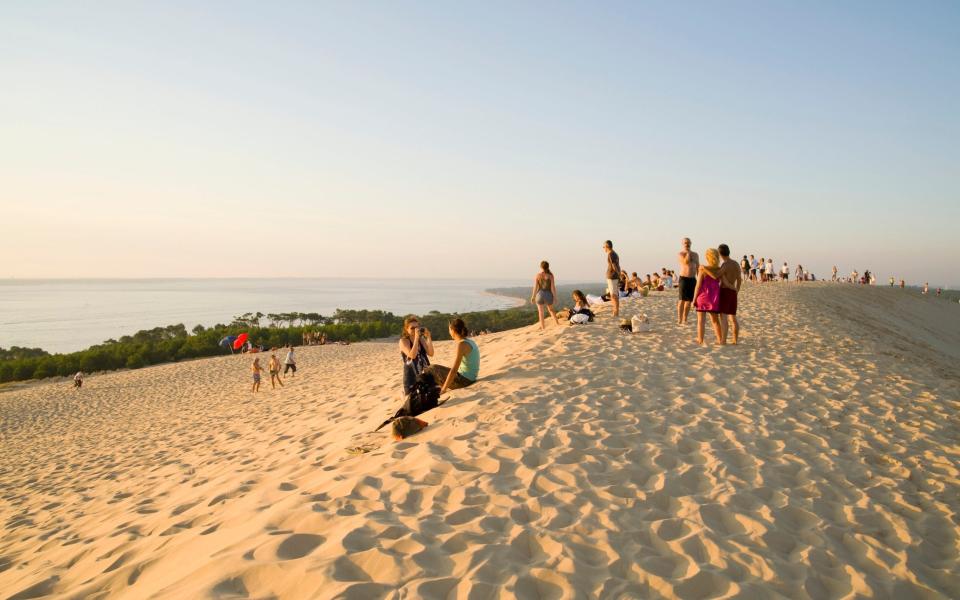
Eurostar has fares from London to Bordeaux starting from £64 per person.
7. Take a dip and a spin in the Annecy mountains
Lake Annecy was famously described as the Pearl of the French Alps by French geographer Raoul Blanchard, and there can be little argument that it’s deserving of the name to this day. France’s cleanest lake is equipped with paddleboard rental, kayaks and pedalos, and the surrounding mountains serve up year-round thrills.
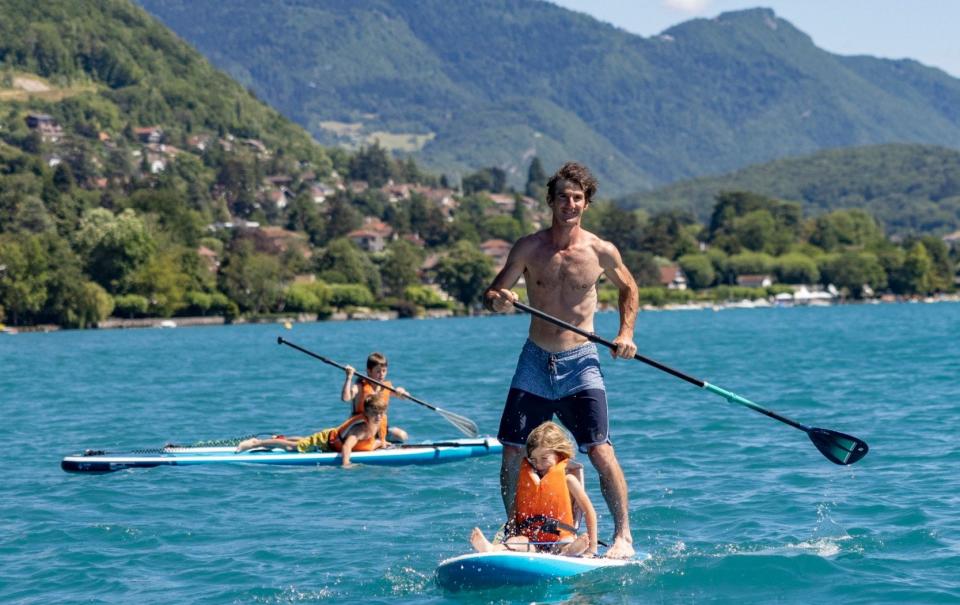
Summers are made for hiking, mountain biking and paragliding, while the winter brings snow-sure slopes aplenty. A largely flat bicycle route goes all the way around the lake, taking approximately half a day to complete (rent bikes from one of the many outlets in town).
Hôtel les Trésoms has double rooms from £149 per night with breakfast.
8. Be a lighthouse (keeper) on Brittany’s Île Vierge
Maybe we read too much Enid Blyton, but staying in a lighthouse is mystical. The tall stone lighthouse of Île Vierge, Finistère was built in 1845, and inhabited by keepers until 2010. Now lovingly restored, it has many more home comforts than the lighthouse keepers would have been accustomed to, but has kept plenty of original features too. The lantern tower has 360 degree panoramic views, accessed via a steep, spiral staircase, and the only sounds you’ll hear will be waves and sea birds. It’s enough to bring out the child in anyone.
La Maison des Gardiens (sleeps nine) is priced £533 for a one-night stay in low season. Book through Abers Tourisme.
9. Spot seals in the Somme
The sandy flats of the Bay of the Somme drain six rivers into the Channel, creating a marble-like area of wetlands that’s a haven for birdlife. But the big pull – particularly for young nature-lovers – is the seals, with the bay home to both the harbour and grey variety. There are no jeeps on this marine safari: instead, hire a kayak or, more novel still, ride on horseback through the shallows.
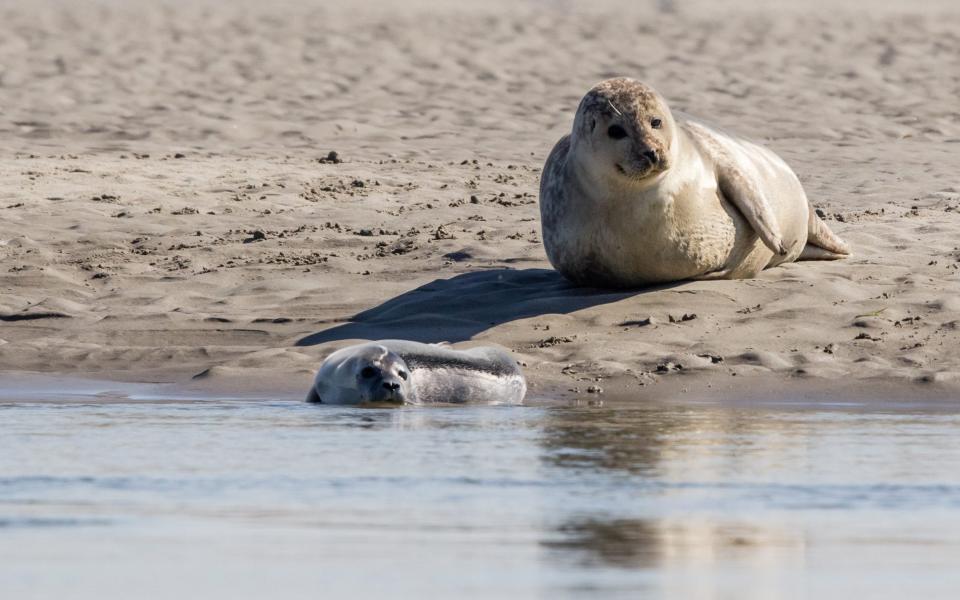
Pierre et Vacances has holiday rentals in the Somme from £339 for a week, based on two people, self-catering.
10. Journey to the centre of the earth at Vulcania
Like Thorpe Park with a heavy sprinkling of Ross Geller telling you why geology rocks, Vulcania is a theme park with an educational purpose. In the midst of the Chaîne des Puys, a chain of long-dormant, 8000-year-old volcanoes, there are interactive exhibitions on how volcanoes are formed, 4D films and a rollercoaster. The highlight is undoubtedly the planetarium, the largest in France.
Entry to Vulcania starts from £20pp. Les lodges de Lemptégy has chalets on the slopes of one of the dormant volcanoes. Doubles from £92 a night, with breakfast.
Best for foodies
11. Make your own cheese in the heart of Paris
Savoir faire wasn’t just for 2020, and French company Wecandoo organises workshops led by artisans all over the country — everything from forging your own knife to making your own cheese. La Latteria in Paris 9th is an Italian delicatessen serving up a mouthwatering selection of French and Italian cheeses, and you can choose whether to make an Italian cheese (mozzarella) or to stay patriotic and make a French tomme. Classes are washed down with a wine and cheese tasting, naturally.
A workshop at La Latteria with Wecandoo starts from £49pp. Hôtel Rochechouart is a 12-minute walk away, and has doubles from £141, room only.
12. Sip sangria in French Catalonia
Tapas, seafood, sangria and a sparkling sea might have you wondering which country you’re in – but in Collioure, the picture-perfect Catalan harbour town just north of the Spanish border, rest assured you’re still in France. A honeypot for artists, during the 20th century Picasso, Matisse and Braque were some of its notable regulars. In 2024 it was voted the most beautiful ‘village’ in the country.
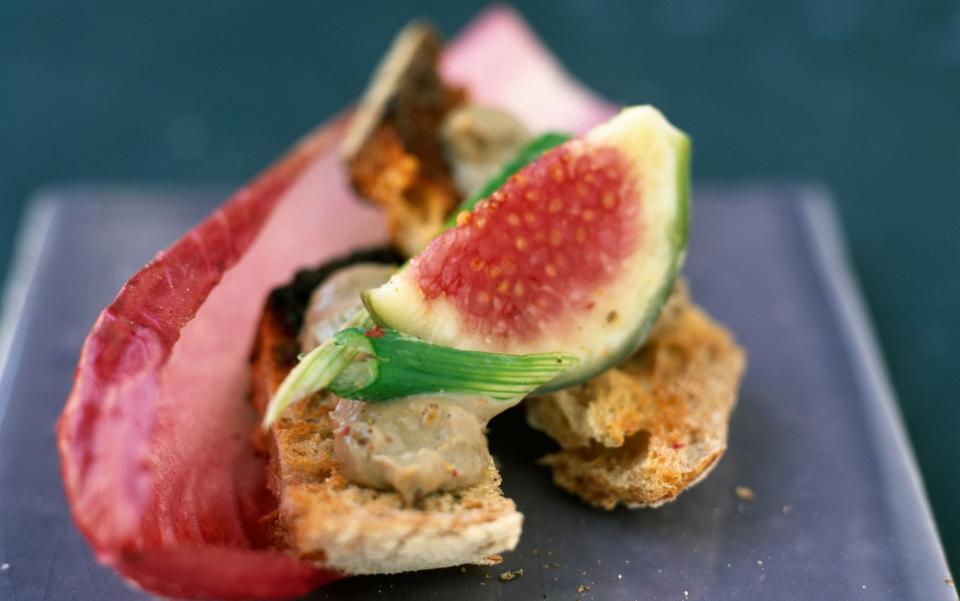
Visit for the Wednesday or Sunday market, when the already kaleidoscopic town bursts with colour and stimulates every sense. If you go to the harbour early enough, you might see traditional wooden Catalan fishing boats bringing in the catch of the day.
100-year-old Hôtel La Frégate has sea views, a central location and doubles from £99 per night, room only.
13. Over-indulge in the gastronomic capital
The difficulty in Lyon isn’t finding somewhere to eat, it’s choosing. With 21 Michelin-starred restaurants, it packs a punch for its size. Many first-time visitors fall into the trap of visiting the old town’s bouchons – traditional “mother’s cooking” restaurants, except that Lyonnaise mothers served up offal rather than turkey dinosaurs and chips. For more variety, and generally better quality, take a food tour. Why is Lyon’s praline brioche pink? What is the unappetising sounding “silk worker’s brain”? And can you eat vegan in France’s meat-heavy capital? (Yes, and exceptionally well.)
No Diet Club has a 3.5 hour walking and tasting tour from £53 per person
14. Drink among the vines in Bordeaux
Of all of the wine regions in France, none is so well known as Bordeaux, often considered the finest wine region in the world. There are plenty of domaines to choose from, many of which pair their vintages with a delicious selection of regional cheeses and charcuteries, but more are adding seasonal vegetables into the mix. Who knew butternut squash and celeriac could match so well with bordeaux?
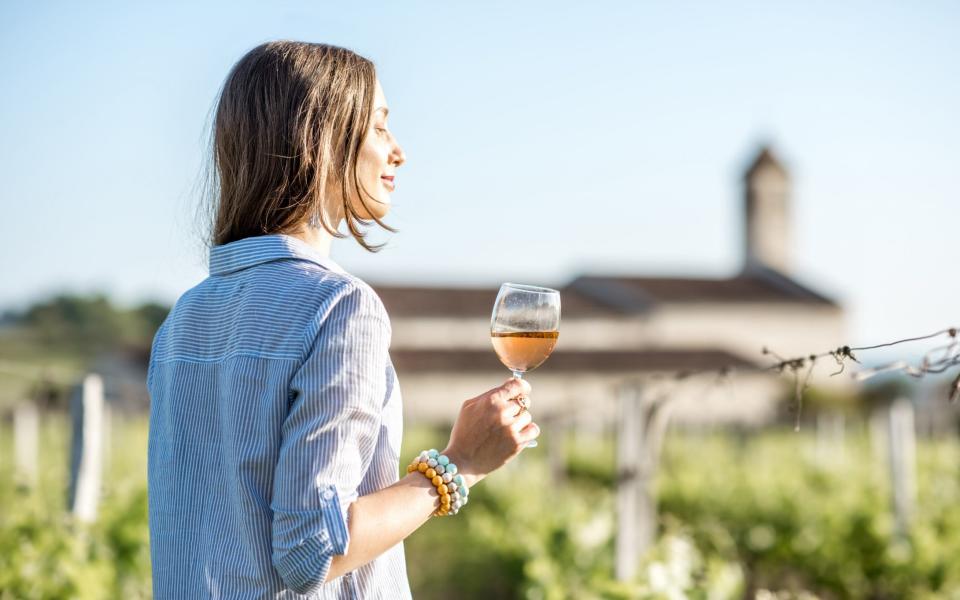
Wine tastings at Château Troplong Mondot start from £43 per person, with overnight stays from £207 for a double room including breakfast
15. Feast on flammekueche and gingerbread in Strasbourg
Strasbourg is widely considered to have the finest Christmas market in France, but with mouth-watering markets year-round and plenty of tasting tours, this picture-perfect city isn’t just for Christmas. In December it may be more festive than Will Ferrell prancing about in yellow tights, but the immense Gothic cathedral and half-timbered houses are always a feast for the eyes – and that’s before you get started on the cuisine. This city sits squarely in the middle of the Alsace Wine Route, and culinary specialities include flammekueche (similar to a thin, crispy white-sauce pizza), gingerbread and choucroute.
The French Travel has the two-night Alsace Getaway from £2,244 for two people, including return trains from Paris and accommodation in neighbouring Colmar.
Best for couples
16. Hit the beach in Calvi
Corsica remains relatively unexplored by British tourists, so if you’re the type of couple who would prefer not to run the risk of bumping into your neighbours, a trip to the medieval citadel of Calvi is a safe bet. Jutting out like a sandcastle into the Mediterranean, the narrow little streets reveal a wealth of seafood restaurants, cocktail bars and sun-drenched terrasses.
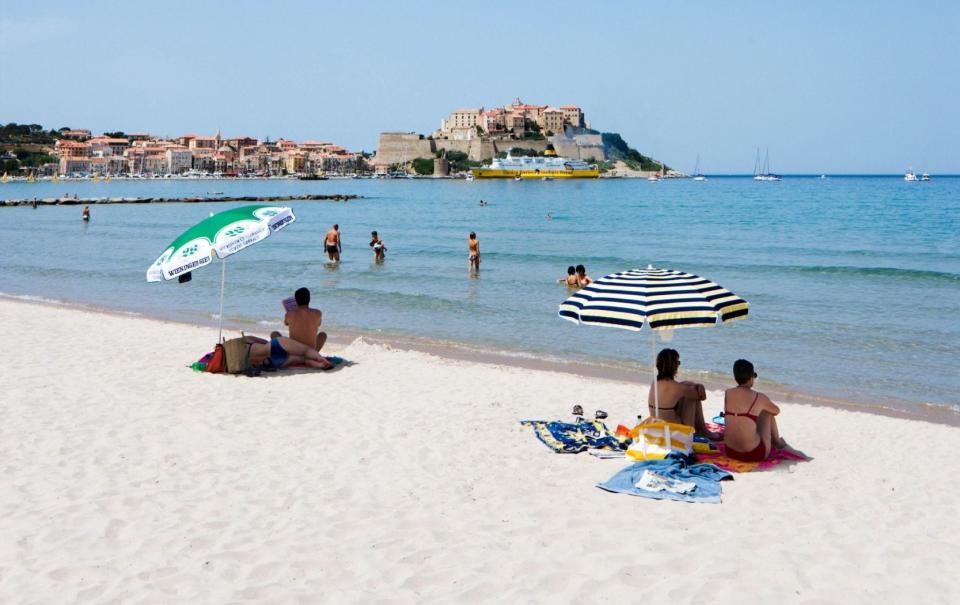
Some of the finest beaches in the country, if not Europe, line the coastline between Calvi and Cap Corse, and – if you rent a car and go beach-hopping – it’s not difficult to find one all to yourself, even in peak season.
Relais & Chateaux’s La Signoria & Spa, in an 18th century Genoese estate, has doubles starting from £292.
17. Smell the lavender in Provence
Every June, the lavender fields of Provence turn the vivid purple of a Parma violet, and the warm air is perfumed with the scent of the flowers in full bloom. But how do you avoid the snap-happy masses that descend upon Provence in June brandishing selfie sticks? Head to Crillon-le-Brave, a fortified village, for views of Mont Ventoux (a name familiar with disciples of the Tour de France) and the quieter lavender fields nearby.
Intrepid Travel has the eight-night Cycle Provence trip from £1,708 per person, including accommodation, activities and breakfast, and taking in Orange and Arles
18. Discover the Paris behind closed doors
There’s a romanticism around 1920s Paris, when writers like Hemingway drank dirty martinis at Les Deux Magots and whiled away their days in cafés. Prohibition never hit France, but that hasn’t stopped prohibition-style speakeasies being all the rage. In classic French-style, though, many of them are restaurants. Book in for a seven-course tasting menu at Orgueil in the speakeasy section to watch the chefs at work as you dine, or in the ‘theatre’ of their new sister property, Colère. If it’s not a speakeasy for you without cocktails, head to The Little Red Door in the Marais. We’ll leave you to do the research on how to get in, but one clue: it’s not through the little red door.
25 Hours Hotel, just opposite Gare du Nord, has doubles from £227 a night, room only. A tasting menu at Orgueil starts from £62.
19. Taste fossil-infused champagne
Some of the fossils at Champagne’s La Cave aux Coquillages are more than 45 million years old, and many winemakers believe it enhances the flavour of the champagne grown in the area. The tipple is, of course, said to be an aphrodisiac – but if the bubbles don’t go to your head, emerging to the bucolic view of tiny villages, windmills and neat rows of vines surely will.
Headwater’s six-day self-guided Cycle the Wine Route of Champagne starts from £1,139pp, including B&B accommodation, local bike hire and listed transfers.
20. Test out Nancy’s thermal spa complex
Le spa thermal took over 100 years to come to fruition. Thermal springs were discovered in Nancy, East France, at the start of the 20th century, but it wasn’t until 2019 that a project began to finally open the spa complex, which is now in its second year. This gold-gilded city was modelled on Versailles and built to welcome Louis XV, but here there’s none of the thousands of daytrippers that Versailles experiences. Don’t miss all the exquisite Art Nouveau architecture, best experienced over dinner at La Brasserie Excelsior.
Entry to Le spa thermal starts from £17pp. The Best Western Plus Crystal has doubles from £134, including breakfast.
Best for outdoor adventure
21. Hit the slopes in Serre Chevalier Vallée Briançon
With 81 pistes, more than 80 per cent of which sit above 2,000 metres, Serre Chevalier is one of the few places that has remained relatively unruffled by the lack of snow in recent years, with its season set to keep going until at least mid-April.
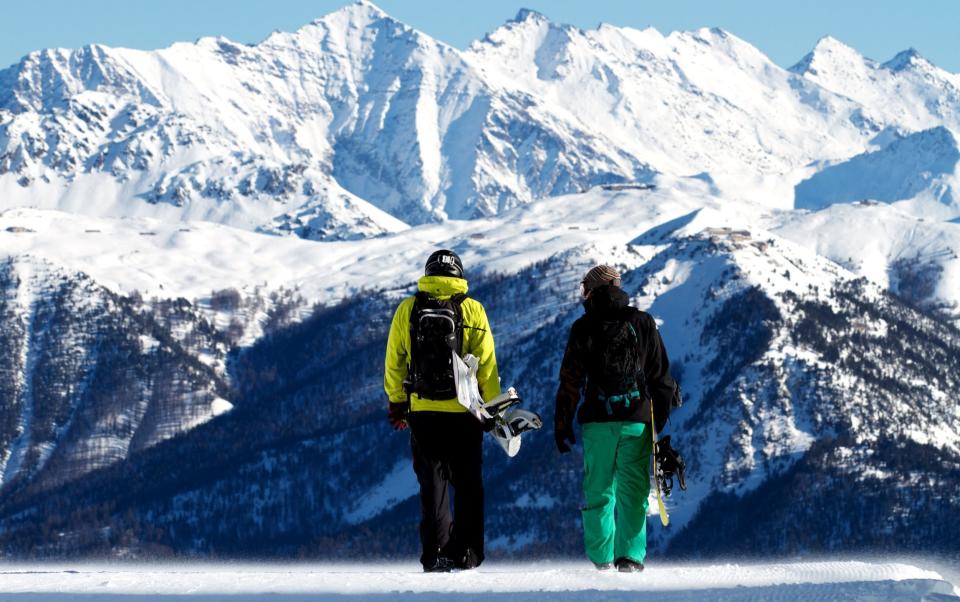
More than 155 miles of runs will keep the pickiest skiers busy for days on end, but for a truly novel experience, try out the zipline – which whizzes you more than half a mile down the mountain in just over a minute – for a bird’s-eye view over the snowy slopes. Summer is no less exciting, with world-class hiking and mountain biking.
Hôtel le Monetier has rooms from £95 per night with breakfast.
22. Hike Corsica’s toughest trails
The beaches may get the glory in Corsica, but did you know the island is also home to some of Europe’s toughest but most rewarding hiking trails? Snaking the bony spine of the Corsican mountains is the two-week GR20 (110 miles), often extolled as Europe’s toughest trek. For those short of time, the Mare e Monti (Sea and Mountain) South from Propriano to Porto Vecchio takes five to six days. Day hikers head to Vizzavona (the north/south divide on the GR20) where a pleasant two-hour walk takes you to the Cascade des Anglais (the English waterfall).
Couleur Corse organises six-day self-guided hikes of the Mare e Monti for £824 per person.
23. Find out why cross-country skiing is all the rage in Les Menuires
Far older than downhill skiing, cross-country skiing started almost 5,000 years ago, but over the last century has been largely overlooked in France in favour of the adrenaline rush of sliding downhill. With increasing environmental concerns around downhill skiing, more and more people are trying out its grandfather instead. Cross-country skiing is incredibly physical, with two main styles: skating (faster, but harder work), and classic, which uses either rails or deep snow. Even on-piste cross-country skiing tends to be much less crowded than downhill skiing, and the surroundings are often much more natural. Many of the cross-country pistes in Les Menuires follow the river, with the longest piste stretching a whopping 16km.
Cross-country skiing lessons start from £42pp. Hotel Alpeen has doubles from £110 a night, room only.
24. Cross the Jura Massif by bike
Infatigable adventurers tackle the Grande Traversée du Jura, a hilly 233-mile cycle route close to the border with Switzerland, which starts in Montbéliard and finishes in Culoz. But you don’t need to have been born in clip shoes to enjoy Jura – often described as France’s last “wild” region – by bicycle. Electric bicycle tours cruise through the Jurassien vineyards, taking in some of the most spectacular waterfalls in the area. Particularly impressive is Baume-les-Messieurs.
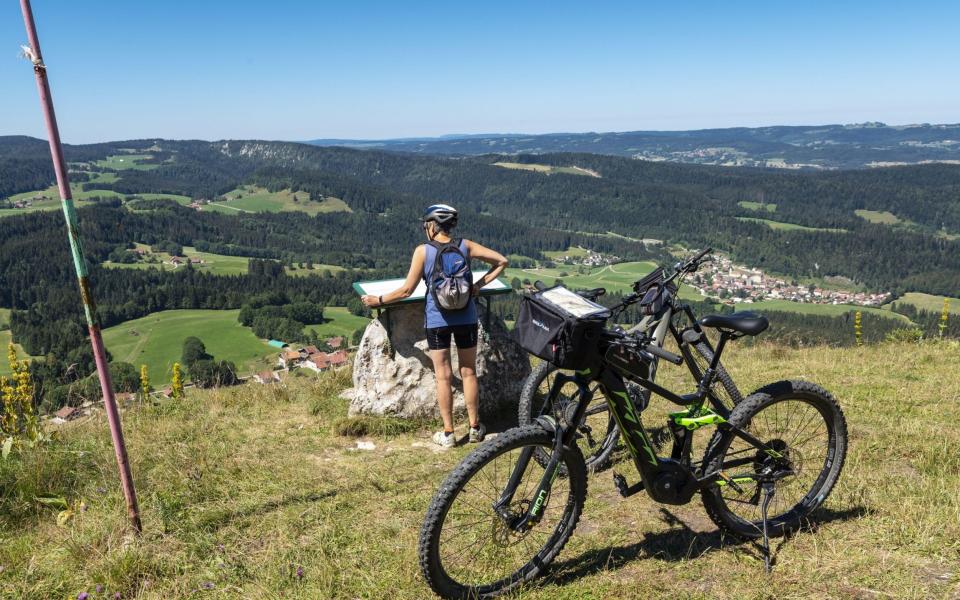
Les Chambres du Parc has rooms from £119 per night with breakfast.
25. Paddleboard around Mont-St-Michel on an incoming tide
Not one to be attempted alone — the tidal waters around Mont-St-Michel can be unpredictable and treacherous, and much of the muddy sand is quicksand — a sunrise trip with Kayak La Baie gives a wonderful, and unique view, of France’s eighth-century island monastery. Watch seals bob around in the waves and marvel at the speed and roar of the tidal bore, the wave which rushes in on the incoming tide. This trip is best for people that have some paddle boarding experience. If you’re a novice, try one of Kayak La Baie’s guided kayak trips down the Sélune River, at the end of which you’ll also get views of Mont-St-Michel.
Kayak La Baie’s paddle boarding tours around Mont-St-Michel start from £25pp. Trailfinders has the eight-night Jewels of France, including Normandy tour, starting from £1,225pp, including B&B accommodation and two evening meals.
Best for slow travel
26. Spot marmots and chamois in France’s oldest national park
Almost straddling the border between France and Italy, the Vanoise was the first national park in France, created in 1963. The highest mountains rise to almost 4,000m, there are more than a dozen glaciers, and there’s masses of wildlife. On foot is the best way to spot different species: chamois and ibex are fairly elusive, but the marmots are so tame and so abundant that they’ll roll right past your feet playing as you hike. A great day hike goes from Arc 2000 to the Refuge du Mont Pourri (approximately two hours one way), but if you’re not afraid of roughing it, check into one of the dormitories for an overnight stay to experience mountain hospitality and camaraderie with fellow hikers.
Pierre et Vacances has apartments in Arc 1950 from £80 a night, room only (two night minimum stay). The cable car from Arc 1950 up to Arc 2000 is free for walkers.
27. Cruise along the Canal du Midi
A Unesco World Heritage site, the 225-mile Canal du Midi, which aimed to link the Mediterranean with the Atlantic, was built in the late 17th century. From Toulouse, it joins the Canal de Garonne to reach Bordeaux, and eastwards splits into two branches, one finishing at Narbonne and the other at Agde. The best way to experience it is by renting a boat and exploring the canal at your own speed, with the walled city of Carcassonne a particular highlight.

Locaboat rents boats from Négra or Argens. A seven-night rental in September starts from £1,272 per boat.
28. Cycle languidly through the vines in Hérault
One of the least-visited parts of southern France, Hérault, where the massif of the Auvergne softens into the arid vineyards of Languedoc-Roussillon, before meeting the sea in a patchwork-like mass of salt lagoons, has off-the-scale scenery. The Pyrenées, often still snow-capped until late spring, are visible from here, and peachy flamingos stand sentry in front of waterside towns. A good two day route (or one long day on an e-bike) is the 80km Oenovélo, winding through dozens of vineyards, best split over two days.
Chateau les Carasses sits almost squarely on the Oenovélo route and lends bikes to guests free of charge. Doubles start from £112 per night, room only.
29. Enjoy farm-to-fork food and slow living in the Dordogne
Périgord in rural Dordogne is the perfect place to escape and unplug. With lush, green vineyards, square-towered châteaux and limestone plateaux, the views are a feast in themselves – and that’s before you get to the markets. Bergerac’s market (Wednesday and Saturday) is deserving of its international reputation (truffled goods are a particular highlight), but don’t miss the smaller towns: the Saturday market at Sainte-Foy-la-Grande is particularly fine.
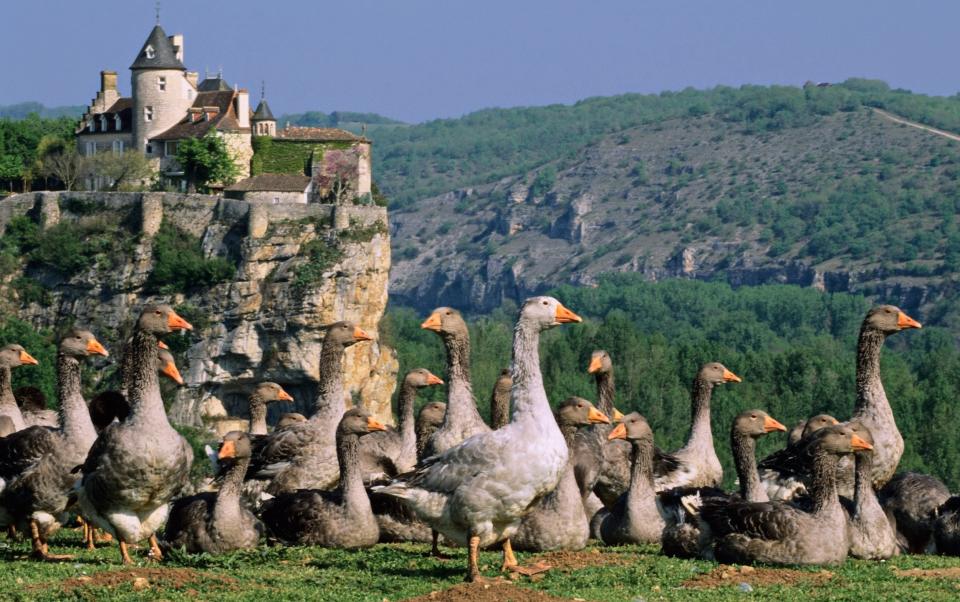
Sawday’s offers self-catering stays for four at The Wine Lodge, seven miles from Sainte-Foy-la-Grande, from £145 per night in low season.
30. Coast along the Breton shoreline in a vintage VW Camper
The French Riviera often gets the glory, but don’t overlook Brittany’s wild and varied 1,675-mile coastline. Between sheltered sandy coves, islands shaped like paint splatters and pink granite, you could spend a lifetime exploring this region and still not experience all it has to offer. Here, a laidback lifestyle reigns supreme: there are more than 200 campsites, so hire a vintage camper and explore at your own pace.
Vintage Camper has vintage VW camper vans from £500 for the weekend.
This article was first published in April 2023, and has been revised and updated.


